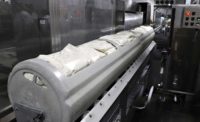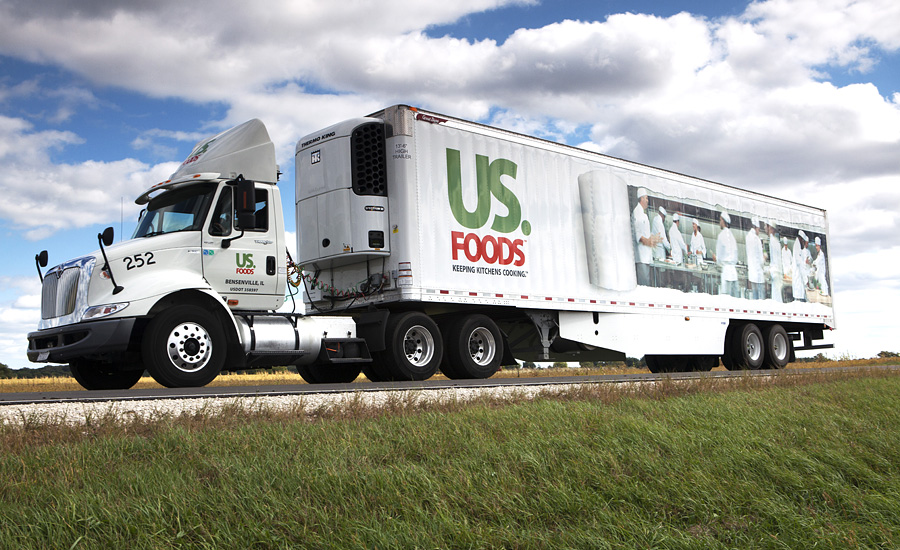How foodservice distributors become one-stop shops for cold food industry
Refrigerated & Frozen Foods interviewed a handful of foodservice distributors to learn more about their challenges, solutions, initiatives and technologies designed to move foodservice distribution forward.

US Foods provides innovative, on-trend products thanks to its in-house expert product developers and culinary staff.

To take advantage of the e-commerce opportunity, Dot Foods created Dot Expressway, an online portal that provides access to over 835 suppliers and 118,000 items.

J.S.B. Industries searches for the best packaging and most reliable shipping outlets to ship frozen bakery items across the country.

When building a new and/or expanding an existing facility, Golden State Foods achieved LEED Gold certification in its newest Greenfield facility (GSF Chicago DC) and ISO 14001 certification at 50% of its domestic facilities.


Golden State Foods’158,000-square-foot distribution center in McCook, Ill., is said to be the first LEED Gold-certified site in the McDonald’s system, serving more than 460 McDonald’s customers in the Chicago and Northwest Indiana market.

Whether it’s wireless tablets on the production floor or automated tracking of distribution, J.S.B. Industries says technology will continue to change the foodservice industry.

US Foods’ mobile platform allows customers to create orders, track deliveries, manage inventory levels and shop for new product offers, all from one app.








Ever-changing trends, enhanced technologies, stringent food safety protocols and the influx in e-commerce are transforming the foodservice distribution industry. But, is the transformation for the good of the industry? Or, does it pose additional challenges for a segment already facing roller-coaster sales in the foodservice arena?
Refrigerated & Frozen Foods interviewed a handful of foodservice distributors to learn more about their challenges, solutions, initiatives and technologies designed to move foodservice distribution forward.
Providing one-stop shopping experience
One of the key challenges facing today’s foodservice distributors is the need to stay ahead of trends and innovation.
That’s why US Foods, Rosemont, Ill., does more than just deliver food to its customers.
“The foodservice industry has evolved significantly over the last 10 years,” says Andrew Iacobucci, chief merchandising officer. “Rather than being focused solely on operational efficiency, today, modern day foodservice is about winning through differentiation, actionable insights and innovation.”
Through its “Great Food. Made Easy.” strategy, US Foods provides innovative, on-trend products developed by expert product developers and culinary staff as well as technology and services that allow operators to more effectively run their businesses.
For example, three times a year, US Foods releases new Scoop product launches. Its summer lineup features a variety of meat and meatless options such as Patuxent Farms Chick-Arrones, what is said to be a first-to-market appetizer or topper made from chicken thighs and chicken skin and Molly’s Kitchen meatless breaded boneless wings, which are 100% vegetarian and feature a meat-free protein substitute for vegetarian diners.
Likewise, US Foods harnesses technology with the use of a mobile platform, which allows customers to create orders, track deliveries, manage inventory levels and shop for new product offers.
Each US Foods location contains highly engineered systems, including CO2 cascade refrigeration systems, computer-controlled energy management systems and more.
“We have several distribution centers such as in Seabrook, N.J.; Buda, Texas; and Jackson, Miss., that are LEED Silver-certified buildings and contain energy efficient lighting, recycled water for landscaping, the use of building materials that reduce ‘heat island’ effect and other energy efficient and sustainable attributes,” says Iacobucci. “We also partner with our customers to ensure they have the marketing knowledge to stay ahead of the emerging technologies. Whether it’s delivering an online ordering system and menu on their website or teaching the fundamentals of dealing with social media engagement, it’s important we help our customers stay up with current and emerging technologies.”
Turning a challenge into an opportunity
For Dot Foods, the main challenge in foodservice distribution is the decrease in overall restaurant traffic.
“Consumers are shifting in terms of what they eat, where they eat and when they eat. So, all companies in the ecosystem, including distribution, have to meet these changing demands,” says Cullen Andrews, vice president, sales and marketing.
That’s why Dot Foods, Mt. Sterling, Ill., looks at e-commerce as not just a challenge, but also as an opportunity.
“Many distributors are making investments and rethinking how to position themselves in the marketplace,” he adds. “The influx of e-commerce has raised the bar of how many products are available and the user experience that customers have on their digital platform.”
To take advantage of the e-commerce opportunity, Dot Foods created Dot Expressway, an online portal that provides access to over 835 suppliers and 118,000 items, including customized marketing, GS1 information, promotions, industry information and ordering.
Dot Foods also recognizes the shift in driver shortage, which is why it’s creating more job types that involve more home time, and is investing in systems that help the company manage employees more efficiently.
“We are leveraging technology to improve the quality of our loads and speed up delivery to our customers,” Andrews says.
Identifying new talent
With the evolving landscape and emerging technologies available in foodservice distribution, one challenge facing the industry is identifying new talent, according to Stephen Wetterau, managing director – City of Industry distribution for Golden State Foods (GSF), Irvine, Calif.
“Distribution is a legacy industry with many foodservice veterans who know how to get the job done. However, there is a lot of opportunity for fresh talent to bring new ideas and to help implement and influence change with technology,” he says. “The demand for instant gratification and e-commerce is forcing the foodservice distribution industry to think about ways to build new systems, so that the customer has access to their orders in real-time. At Golden State Foods, our future goal is that once the customer places an order, they will be able to track that order, receive real-time updates and cancel or change the order, all using digital technology. This is key for Golden State Foods, as it enhances our commitment of transparency and traceability for our customers.”
GSF also achieved LEED Gold certification in its newest Greenfield facility (GSF Chicago DC) and ISO 14001 certification at 50% of its domestic facilities. It also uses hydrogen fuel cells to power material handling equipment, ammonia cascade refrigeration systems at several distribution centers and rainwater to irrigate native vegetation at select facilities.
“Additionally, it’s important that when considering the development of a new distribution center or updating an existing warehouse that we look at the opportunity to evolve that center to keep up with emerging technology with the least impact or disruption to our customers,” adds Wetterau. “This will ultimately allow a flexible footprint where automation and robotics fit in seamlessly within our operations.”
Furthermore, the adoption of emerging technologies such as blockchain will ultimately enable GSF and its network partners to digitize their supply chain processes.
“Through ‘smart contracts,’ we will be able to create cloud-based, trusted platforms for data exchanges and collaboration that is inherently transparent,” says Guilda Javaheri, chief technology officer. “Given the breadth of technologies available, the food industry is in a prime position to benefit from improved traceability and real-time data to ensure product integrity and food safety.”
Making sustainability matter
Although J.S.B. Industries has only been involved in e-commerce for the last five years, it’s been in foodservice manufacturing for the last 35. And, whether it’s wireless tablets on the production floor or automated tracking of distribution, the Chelsea, Mass., company embraces
technology.
“Shipping frozen bakery items across the country is a challenge, but with our commitment to finding the best packaging and most reliable shipping outlets, we have been able to keep the quality of our products at the level our customers have been accustomed to for over three decades,” says Scott Anderson, vice president of operations.
J.S.B. Industries also implements innovative and responsible environmental practices company-wide.
“We recently completed a $100,000 lighting project, upgrading all our lighting to LED, sensor-response lighting,” he adds. “Our recycle program is second-to-none. We have food waste compactors as well as bailers for corrugate, plastic and paper.”
The owner of the Smart Choice, Muffin Town and SunWise brands also uses enterprise resource planning (ERP) software to keep its entire business connected.
“We are currently implementing wireless handheld tablets in the bakery to assist in lot tracking, consumption and inventory control,” says Anderson. “All tie back into our ERP software in real-time, keeping our entire team on the same page throughout the manufacturing and distribution process.”
Looking for a reprint of this article?
From high-res PDFs to custom plaques, order your copy today!















